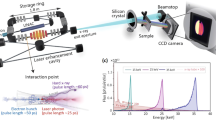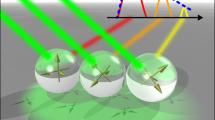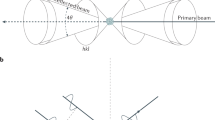Abstract
IT is a remarkable but as yet imperfectly understood fact that crystalline graphite has a diamagnetic susceptibility many times greater than that of carbon in other forms, either by itself or in combination. In the hope of elucidating this phenomenon, we were led to make a careful study of the X-ray diffraction patterns of purified graphite, using a narrow pencil of the K radiation of copper, and taking special pains to avoid fogging of the plate in the vicinity of the primary beam, either by stray radiation or by photographic halation. The diffraction photographs obtained with powdered graphite in this way show a new and hitherto overlooked phenomenon (Fig. 1). We find a notable amount of scattered radiation in the area surrounding the primary beam, terminating sharply at the first diffraction ring, and reappearing with a much smaller though quite sensible intensity in the area between the first and second diffraction rings.
This is a preview of subscription content, access via your institution
Access options
Subscribe to this journal
Receive 51 print issues and online access
$199.00 per year
only $3.90 per issue
Buy this article
- Purchase on Springer Link
- Instant access to full article PDF
Prices may be subject to local taxes which are calculated during checkout
Similar content being viewed by others
Author information
Authors and Affiliations
Rights and permissions
About this article
Cite this article
RAMAN, C., KRISHNAMURTI, P. A New X-ray Effect. Nature 124, 53–54 (1929). https://doi.org/10.1038/124053b0
Issue Date:
DOI: https://doi.org/10.1038/124053b0
Comments
By submitting a comment you agree to abide by our Terms and Community Guidelines. If you find something abusive or that does not comply with our terms or guidelines please flag it as inappropriate.



